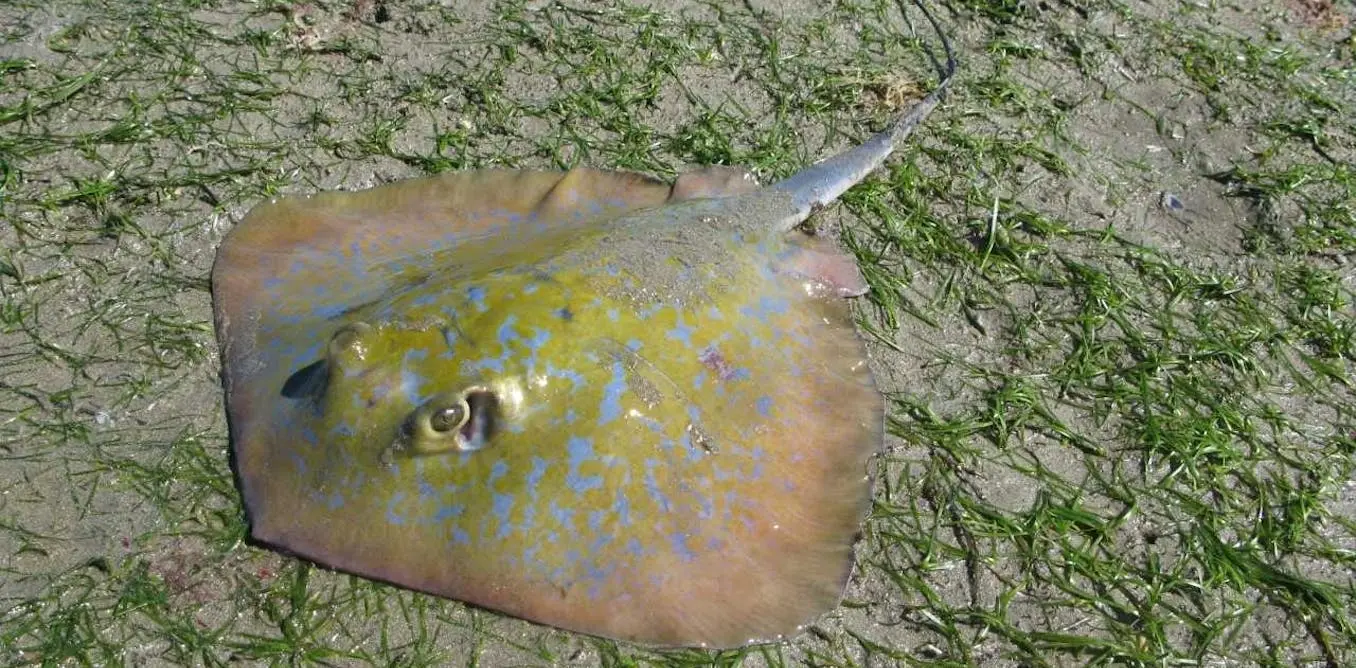South Africa’s Cape south coast offers many hints about how our human ancestors lived some 35,000 to 400,000 years ago during the Pleistocene epoch. These clues are captured in the dunes they once traversed, today cemented and preserved in a rock type known as aeolianite.
Our research team has been studying this area since 2008. We’ve described the fossilised tracks of large Pleistocene animals such as lion, rhinoceros, elephant, giant buffalo and crocodiles, as well as footprints left by hominins.
Then, in 2018, one of our “citizen scientist” supporters, Emily Brink, spotted an intriguing rock east of Still Bay, about 330km east of Cape Town. The rock was unusually symmetrical and was shaped uncannily like a stingray, minus the tail.
After careful study of the rock, we have published an academic article in the journal Rock Art Research in which we posit that it represents a sand-sculpture of a blue stingray (Dasyatis chrysonata). We believe that the sculpture might have begun with tracing a specimen in the sand.
Saving you a click. The actual sculpture looks like this “https://images.theconversation.com/files/583646/original/file-20240322-30-pfw4nb.jpg?ixlib=rb-1.1.0&q=30&auto=format&w=754&h=854&fit=crop&dpr=2”, the image on the thumbnail is just a picture of a random stingray.



